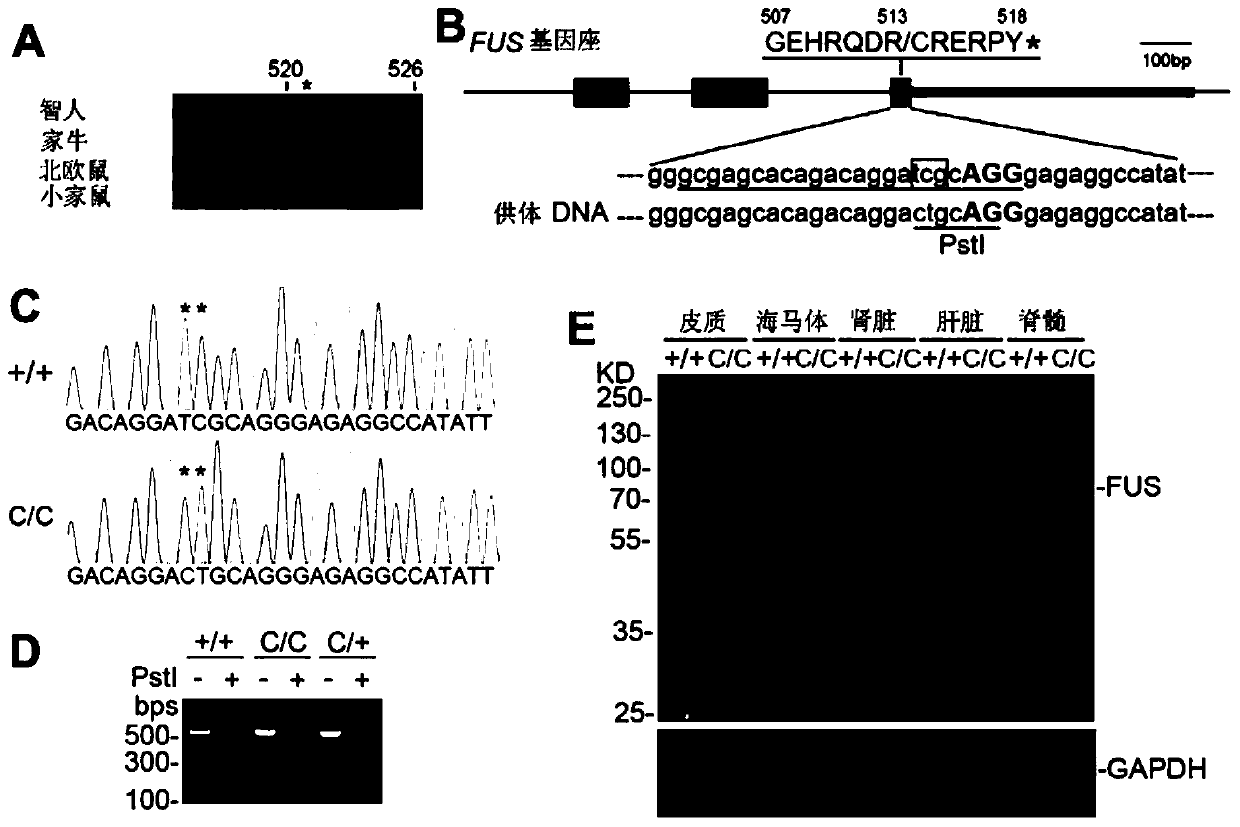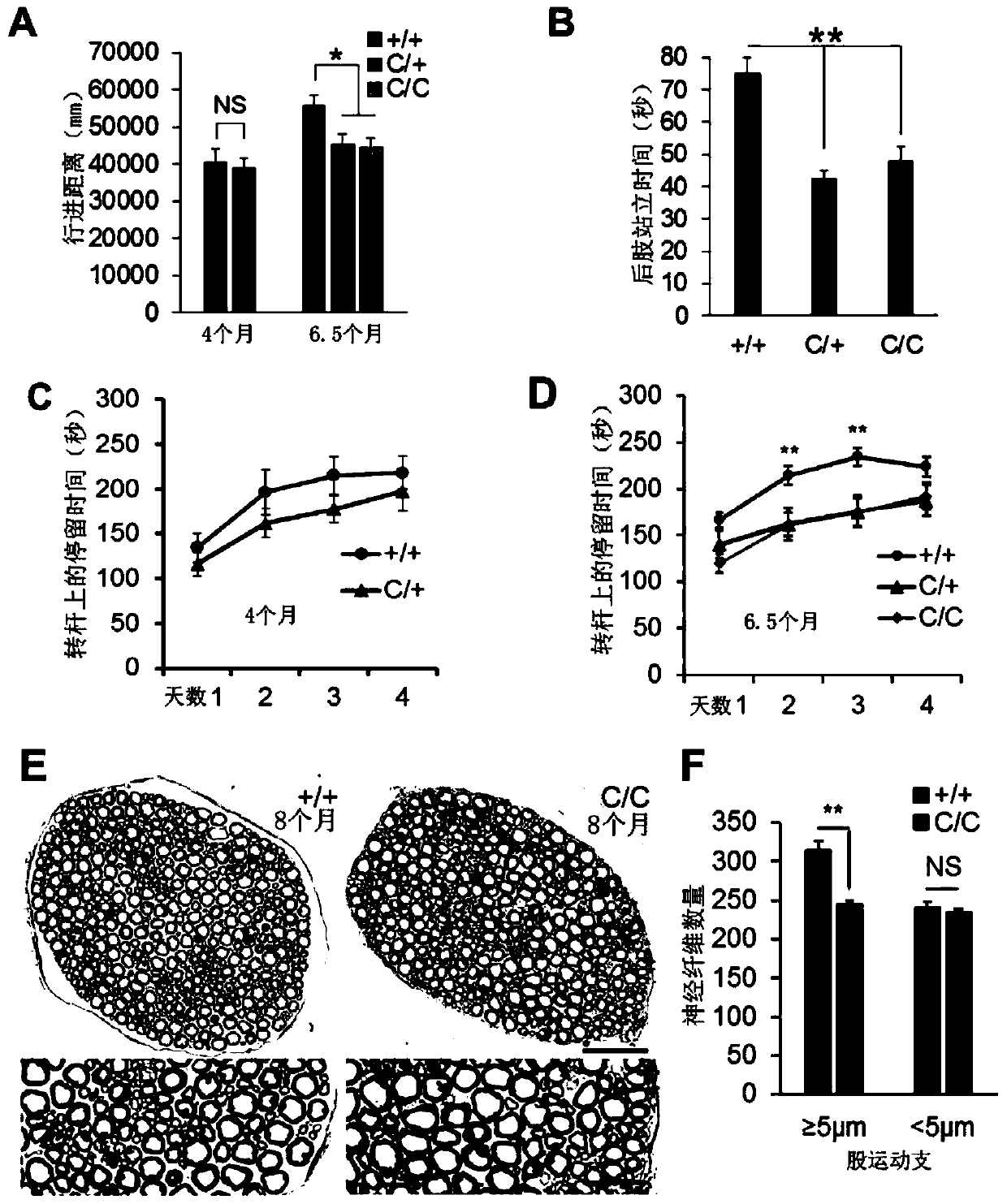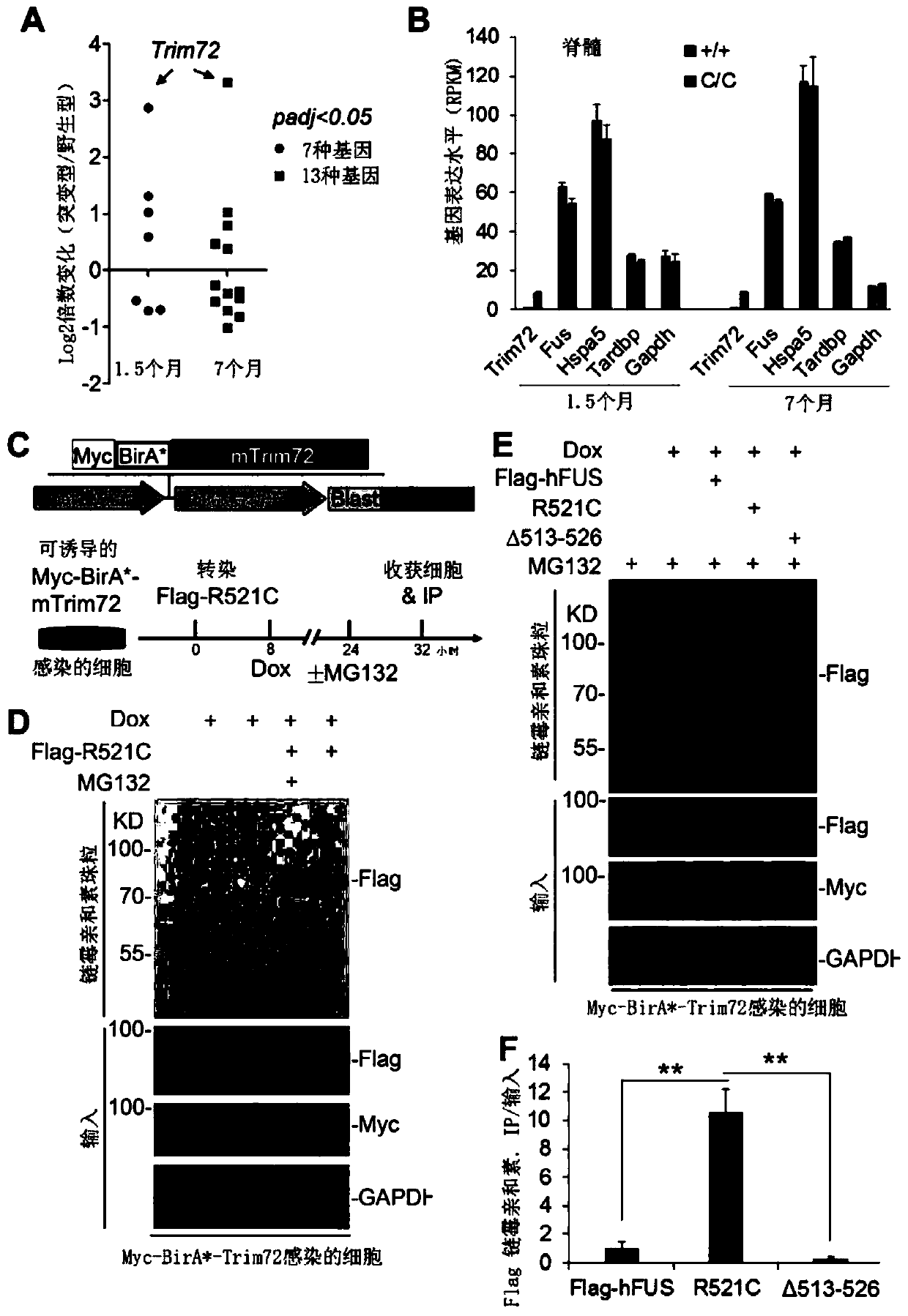Trim72 as potential therapeutic target for als through ubiquitinating mutant fus protein
A mutant and ubiquitination technology, applied in the field of biomedicine, can solve the problems of unclear endogenous level expression and function of wild-type and mutant RBP
- Summary
- Abstract
- Description
- Claims
- Application Information
AI Technical Summary
Problems solved by technology
Method used
Image
Examples
Embodiment
[0142] In the past, great efforts have been made to generate animal models for ALS by overexpressing recombinant DNA carrying mutants found in ALS families. Although these transgenic animal models have greatly increased our understanding of disease mechanisms, one could argue for potential artifacts resulting from ectopic overexpression of mutant proteins in disease models, such as in mice (a most popular ALS mouse 40-fold overexpression of human SOD1-G93A in model). Similar transgenic strategies were applied to generate TDP-43 models and FUS ALS models. However, overexpression of wild-type TDP-43 and FUS also produced locomotor phenotypes similar to mutant transgenes in many animal species, including Drosophila, mouse, and rat, suggesting a role for pathogenesis in these models There is an underlying human factor. In addition, transgenic strategies present other caveats, including uncertain genomic insertion sites, unstable copy number, potential disruption of genome integr...
PUM
| Property | Measurement | Unit |
|---|---|---|
| diameter | aaaaa | aaaaa |
Abstract
Description
Claims
Application Information
 Login to View More
Login to View More - R&D
- Intellectual Property
- Life Sciences
- Materials
- Tech Scout
- Unparalleled Data Quality
- Higher Quality Content
- 60% Fewer Hallucinations
Browse by: Latest US Patents, China's latest patents, Technical Efficacy Thesaurus, Application Domain, Technology Topic, Popular Technical Reports.
© 2025 PatSnap. All rights reserved.Legal|Privacy policy|Modern Slavery Act Transparency Statement|Sitemap|About US| Contact US: help@patsnap.com



